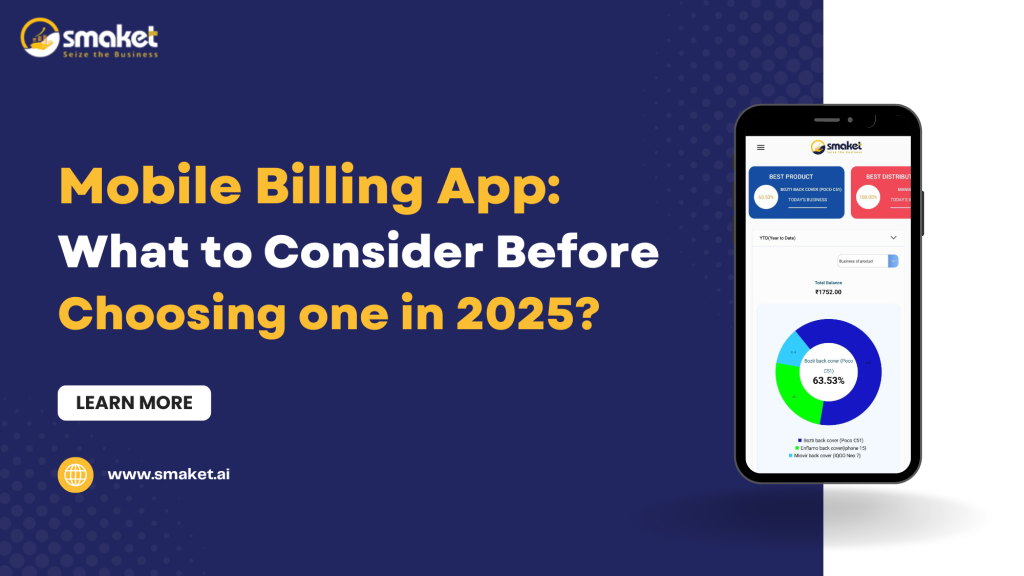As businesses become more mobile and digital-first, the demand for Mobile Billing Apps continues to grow. Whether you’re a small business owner, freelancer, or managing a retail store, using a billing solution that works on your phone or tablet can help you save time, reduce paperwork, and manage your finances from anywhere.
But with so many options out there, how do you choose the right mobile billing app for your needs?
In this guide, we’ll break down the most important factors to consider when selecting a mobile billing solution in 2025.
1. User-Friendly Interface
A mobile billing app should be easy to use, even if you’re not tech-savvy. Since you’ll be operating on a smaller screen, simplicity matters.
Look for:
- Clean design and intuitive navigation
- Quick invoice creation with minimal steps
- Minimal learning curve for first-time users
Apps that require too many steps or clicks can slow down your workflow.
2. Invoicing and Payment Features
At its core, your billing app should make it easy to create, send, and track invoices — all from your mobile device.
Key features to look for:
- Custom invoice templates
- Recurring invoices
- Automatic payment reminders
- Multi-currency and multi-language support
- Digital signature support
3. Tax Compliance and Legal Requirements
If your country or region requires GST, VAT, or other tax regulations, make sure your mobile billing app is compliant.
Must-have features:
- Automatic tax calculations
- GST or VAT-compliant invoice formats
- Tax summary reports for filing
- Customizable tax rates
This will save you time during tax season and help you stay compliant with local laws.
4. Cloud Sync and Offline Access
A good mobile billing app should allow you to access your data from anywhere, even when you’re not online.
What to look for:
- Cloud backup and real-time sync
- Access from multiple devices
- Offline billing that syncs when you’re reconnected
These features ensure you never lose data and can keep working, even without internet access.
5. Reporting and Insights
Billing is more than just invoices — it’s also about understanding your cash flow and business performance.
Helpful reports include:
- Outstanding payments
- Total sales
- Client-specific billing summaries
- Tax reports
A mobile billing app with built-in analytics can give you quick insights, right from your phone.
6. Security and Data Protection
Since you’ll be storing financial data and customer information, the mobile billing app must offer strong security measures.
Essential security features:
- Data encryption
- Secure login (e.g., biometrics or 2FA)
- Role-based user access
- Auto-backup options
Always check the app’s privacy policy and where your data is stored.
7. Integration with Other Tools
To streamline operations, choose a billing app that integrates with your other business tools.
Useful integrations:
- Accounting software (like QuickBooks or Zoho Books)
- Inventory systems
- CRMs
- Mobile payment apps
Integration reduces duplication and helps automate your workflow.
8. Cost and Scalability
Finally, look at the pricing structure. Some mobile billing apps offer free versions, while others have premium plans with added features.
Consider:
- Free trial availability
- Monthly vs. annual billing
- Whether the features grow with your business
Pick an app that offers real value for money and allows you to upgrade as your business grows.
Conclusion
Choosing the right Mobile Billing App in 2025 comes down to understanding your business needs and finding a tool that’s fast, reliable, secure, and scalable. Focus on features that matter to your operations — from invoicing and tax compliance to cloud sync and integration.
With the right app in your pocket, you can run your business from anywhere and get paid faster, all while staying organized and stress-free.

